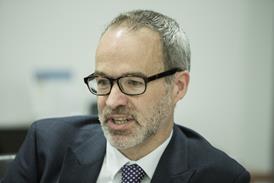Nadeem Moghal on the lack of some basic technologies needed in every hospital in the NHS that accelerate the flow and quality of information, enabling timely responsive care
So many shiny things
There must be a health tech conference happening every day somewhere. Add in the tweets, LinkedIn, journal articles, glossy management consultancy tomes and a growing number of dedicated journals, and national reports, we must be reaching some new tech rule of doubling. A bit like Brexit, the volume of stuff, the noise, the feeds, the rhetoric, the promise of the promised land of health tech, can get tiring.
In amongst all this we have a growth in taxpayer NHS invested structures and activities; NHSX, NHS Digital, Digitalhealth London, AHSNs, NHS Innovation Accelerators, NHS digital fellows, NHS Clinical Entrepreneurships … Even digitalhealth is becoming one word. It is getting deafening. An innovator entering the NHS to engage with the biggest single market is walking into treacle. Perhaps these “bridges” of NHS digital structures are hoping to bypass the treacle.
The promise of health tech is boundless. Prevent, predict, and population health are just some of the promises. There is, however, only one fundamental health tech value – accelerate and improve the quality of information flow to benefit staff, patients, leading to timely care. Improve the experience, and improve health outcomes, including saving lives. A lot sits in the experience domain, very little in the outcomes domain.
There are so many shiny things out there, one wonders when the magpies will come to take away the lightweights soaked in snake oil. There are about five million apps. Approaching a million are health related. How many, over the years have you downloaded, and how many do you use today? It will be a logarithmic decline.
The distracting dust storm
The frenetic NHS digital activity is everywhere you look. Artificial intelligence, be it just more complex algorithms, or genuine machine learning, will have a direct impact on ”theatre scheduling, and radiology reporting”. The chief whirling dervish, Matt “App” Hancock, who likes shiny things, is throwing up a dust storm, blinding us. He is not enabling some real basics – because there is the tricky issue of capital – there isn’t any, apparently.
If the NHS and the Secretary of State are serious about using technology to improve the safety outcomes for patients, including preventing avoidable deaths, there are some basic technologies needed in every hospital. They all accelerate the flow and quality of information, enabling timely responsive care.
1. Electronic patient record
2. Patients with full access to their record
3. E-prescribing
4. Diagnostics ordering system
5. E-discharge
6. Digital monitoring of bedside care linked to outreach teams
7. Secure mobile, voice, text, image and task communication system between staff
8. Digital imaging and remote reporting platforms
9. RFID on equipment, patients and staff to track, keep safe and optimise work, staff, patient flow
10. Governance and compliance systems
11. Seamless information flow between hospital systems and ambulance, community and primary care services
12. Computers and other hardware devices with fit for purpose operating systems to deal with all of the above
Each item in the list has cost effectiveness value, safer care, and lives saved. Collectively the gains, per hospital, are huge. More lives saved than investing in deck chairs, patient safety directors, a national incident reporting system, or even medical examiners – all no doubt useful one day, but peripheral to the basics needed now.
Take number 6. Bedside digital collection of patient physiology. Blood pressure, oxygen saturation, respiratory rate, pulse rate, temperature can all be collected through wearables, releasing already stretched staff to care and interpret and act on the information. Even if wearables is a step too expensive, the manually collected data can be added to a technology platform that helps overcome human factors psychology and reduce errors in decision making.
As medical director, I was almost habituated into accepting case after case of the missed deteriorating in-patient. If they died, they might have anyway, but did not receive the right care and timely decisions. We would report the serious incident, investigate, learn, and repeat. The introduction of Vitalpac increased detection rates of the deteriorating patient, with the outreach team connected and supporting ward staff to rescue as well as enable the right outcomes. And I could sleep easier. I am as sure as I can be that one of my own more serious sepsis episodes would have been better managed had the many data points been better understood, sooner.
Take number 3. Whilst on a WHO mission to Greece to advice on hospital performance indicators we discovered that Greece has a single e-prescribing system, linked to disease codes. The whole of Greece. The sixth wealthiest nation (at the time of writing) hasn’t figured out how to establish one system of anything, in one local health economy.
Every single item on the list is already tried, tested and being used somewhere, but not comprehensively in one building, nor universally in the NHS, our one system for providing universal healthcare. A hospital with all this in place can measure outcomes, audit effectively, extract learning quickly, support what staff we have to provide safe care.
Everything else, including apps to stop the use of stamps to send clinic appointments, is going to help, eventually, but a hospital that doesn’t have the basics is not delivering the safest care possible. If the Care Quality Commission is serious about safe care, the rating for safe should include the tick box list above. You are welcome.
Digital maturity
There is probably a direct correlation between the look of a hospital estate, and the “look” of the digital estate. There are exceptions. For any and all of this to work needs the infrastructure and bandwidths to maintain the constantly growing high volume data traffic. It takes capital to build the pipes and cables for the utilities to flow, on top of which the list above can then function – all of which also require capital.
I can not begin to measure how much all this NHS digital bridge building and NHS England safety frenetic activity is costing. If all that cost were scooped up, might we have some capital to start delivering technology supported safe care, in every hospital. The whirling dervish will move on. We need to see beyond the dust storm, and demand what we, the medical profession, know is needed to keep staff safe and save lives. I am struggling to understand why the voice of the medical profession is so muted.































6 Readers' comments